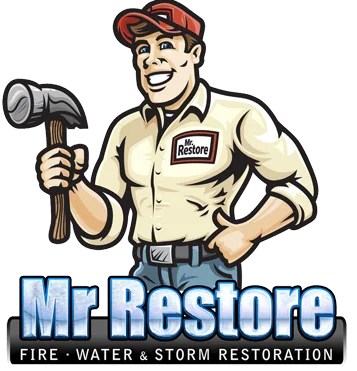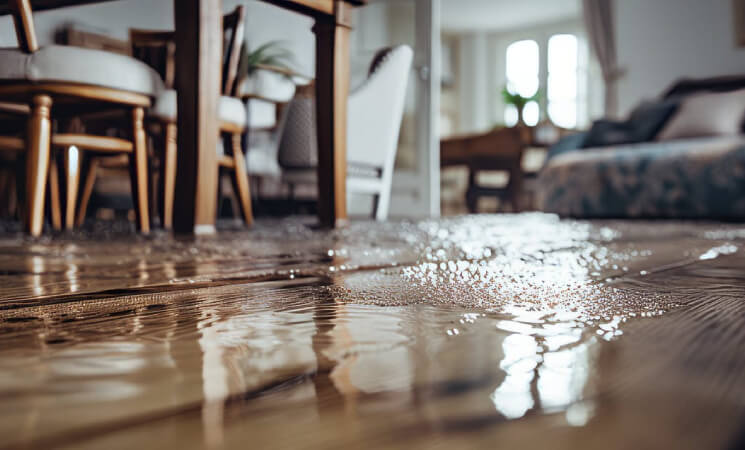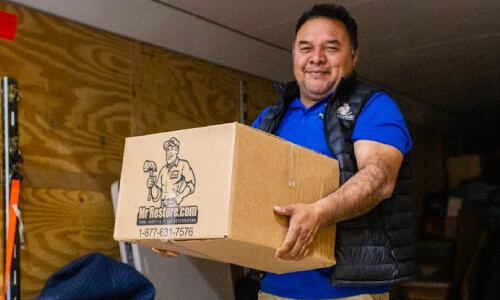It’s that time to prepare for spring, here in Dallas, we have experienced warmer weather than usual. It’s a good idea to start planning and preparing for the spring storms that come with warmer weather. Texas can bring catastrophic storms, including tornadoes, hail, high winds, floods, and heavy precipitation.
It is important to prepare your home, business, and family for possible disasters. In order to keep your family and possessions safe, you should have an emergency plan in place, you should board up your windows and have an emergency kit ready to go.
Different types of storms can lead to different types of hazards, but it is important to have basic plans and routes prepared so you can act quickly. Mr. Restore has a few tips to help keep your family and property safe.
Board Up Your Windows
Boarding up your windows before a serious storm or hurricane is a vital step towards keeping your home safe. Boarding your windows from the inside will ensure that glass does not projectile and spill into your home if high winds and pressure cause the glass to shatter. Boarding your windows and doors will also help prevent water damage because rain will be unable to enter if the windows or doors break during a hurricane.
Follow our simple steps and guidelines for boarding up your home this summer and preventing damage to your home.
Step 1: Measure and count all of of your windows and doors to ensure you are purchasing the correct amount of materials
Step 2: When you measure each window and door, add 8 inches to the height and length of each measurement when recording. You want the boards to be larger than the opening to ensure the correct amount of protection.
Step 3: Most plywood sheets are 4 x 8 feet, this will help you calculate how many sheets you will need. The Federal Alliance for Safe Homes suggests purchasing plywood that is at least 5/8 inches thick.
Step 4: Gather your materials. You will need drill and drill bits, a circular saw, a hammer, and a wrench. Remember, you will also need safety materials, including work gloves and safety goggles. It will be easier to complete this project with another helper.
Step 5: Drill holes in the plywood first, about 2 inches from the edge
Step 6: Carefully place the plywood over your opening and mark where you will place the mounting holes
Step 7: Use lag screws to penetrate the wall and secure the plywood to the opening. You will only need to penetrate 1-2 inches deep.
Step 8: The boards can be removed or added when you like, keep the lag screws in to make it easier to put the boards back quickly in case of an upcoming storm.
Have a Communications Plan
Before a storm hits, communicate with your family and employees what to do if a heavy storm threatens your safety. High winds, tornadoes, and floods could lead to dangerous circumstances. When everyone in your home or building knows the plan and acts accordingly, it could save lives. It is possible that you may need to quickly implement the plan and evacuate. Discussing and preparing these topics beforehand could save valuable time. Important things to plan and discuss are:
- What is the evacuation route? – Plan and discuss the procedures for evacuation if a State of Emergency is called. Check out Dallas’ emergency evacuation routes from the U.S. Department of Transportation.
- Where should we meet for shelter in the building? – In extreme cases, including tornadoes and hurricanes, having a shelter plan in place could mean the difference between life and death. The shelter should be selected in the lowest level of the building and in an interior room away from windows, doors, outside walls, and corners. Be sure you have supplies there.
- Where are our emergency kits and supplies? – Know where you keep your emergency supplies. We provide a detailed list of important things to include in your emergency kit below. Ensure each member of the household or business knows where they are located.
- Who’s responsible for what? – Who will be in charge of grabbing emergency supplies? Who will be in charge of driving? Who will be in charge of taking care of household pets?
The Federal Emergency Management Agency provides a detailed worksheet to help you, your family, and your business further prepare an emergency communication plan.
Have an Emergency Kit Prepared
Lastly, you should have an emergency kit with items you may need in case the worst happens. You will need food, water, clothes and many other items in case you are out of power or do not have access to the store. Gather the following items and keep them where you and your family would likely seek shelter:
- Food – at least a 3-day supply for each person (try finding canned food that doesn’t need a can opener)
- Water – one gallon per person per day (3 days)
- Extra batteries
- Radio to receive emergency warnings and alerts
- Flashlight
- Change of clothes for members of the household (including socks and shoes)
- First aid kit
- Portable cell phone charger and batteries
- Moist towelettes, garbage bags, and other personal sanitation items
- Personal hygiene items
- Prescription and other medications if needed
- Cash or traveler’s checks – remember, ATMs may not be working if power is down
- Pet food and extra water
- Warm blanket
- Infant formula and food
- Clothing
Games, books, puzzles and other entertaining activities
After a storm has passed, there are likely many things that need to address. Many families find themselves picking up their yard, restocking supplies, and helping community members around them. The Texas Department of Public Safety provides resources and tips for post-storm preparedness.
If you find your home or business damaged after a storm from Spring’s heavy precipitation, high winds, hail, or floods, Mr. Restore has over 50 years of restoration experience. Our certified technicians and experts have the most advanced technology and techniques to help you recover from a Spring storm damage.






